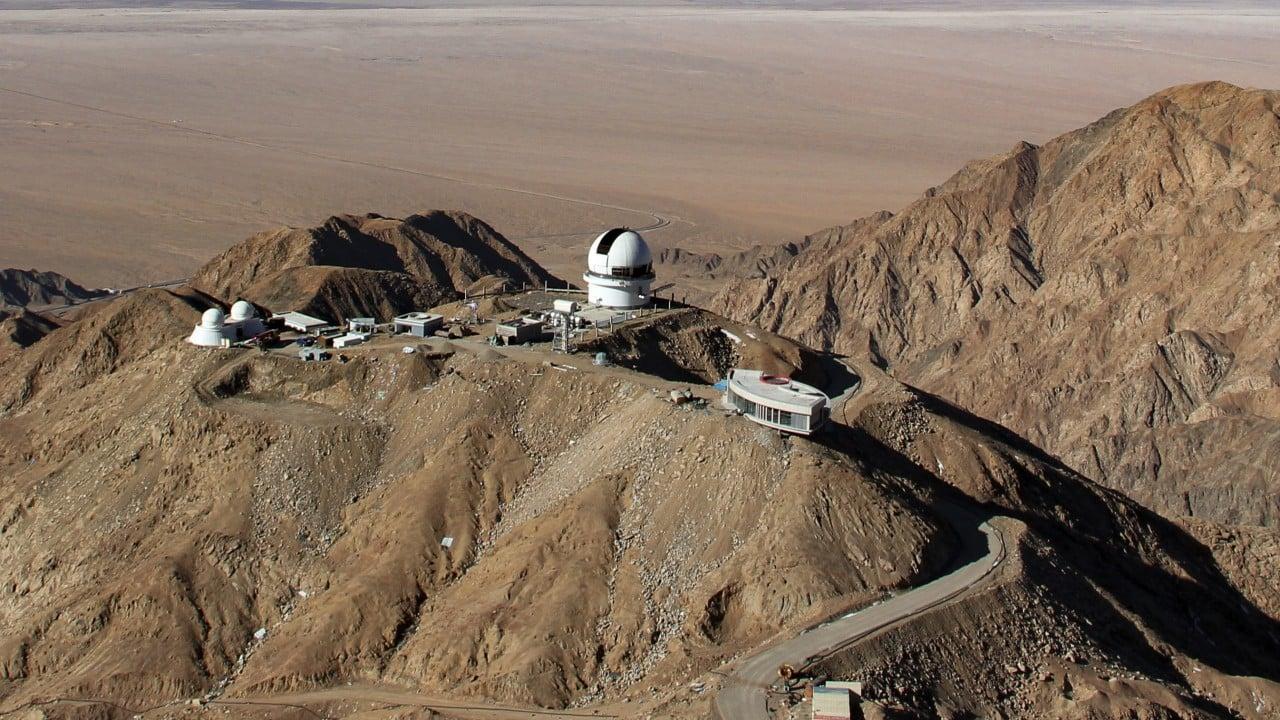
“The air is so dry in the Gobi desert. If we could find a way to move LAMOST here, we’d simply have less clouds and many additional clear nights for observation,” said Zhao, who has been working with the telescope for more than two decades.
LAMOST is among the most efficient tools to scan the night sky, with its segmented main mirror that can continuously adjust its shape to meet observational needs.
The Large Sky Area Multi-Object Fibre Spectroscopic Telescope (LAMOST), a three-hour drive from Beijing in China’s Hebei province. Photo: Ling Xin
The telescope also features 4,000 optical fibres, making it possible to obtain the spectra of 4,000 stars simultaneously, revealing their mass, age, chemical composition and other basic properties.
The 20 million stellar spectra captured over the past decade by LAMOST have contributed to major scientific discoveries around the world, including a re-estimation of our galaxy’s mass, rare black holes, and a challenge to classical theories of star formation.
Despite these successes, LAMOST’s site selection has been harshly criticised by some experts, who say the telescope is failing to meet its original scientific goal: to obtain the spectra of stars outside the Milky Way, not within it.
While LAMOST has been providing the global scientific community with the largest spectral data set since 2014, Zhao worries it could soon be surpassed by a similar project in the US.
The Dark Energy Spectroscopic Instrument (DESI) at Kitt Peak, Arizona has been conducting spectrographic surveys of distant galaxies since 2019.
“DESI is set to release its first batch of data. I expect their data size to exceed LAMOST’s in just a few years – unless we move and upgrade our telescope,” Zhao said.
Saishiteng was identified in 2018 as a potential stargazing site by Zhao’s colleague at the National Astronomical Observatories in Beijing Deng Licai, who led a team that scaled the mountain on foot to set up monitoring equipment at 4,200 metres (13,800 feet) above sea level.
After three years of monitoring, the data confirmed that the remote location rivalled the best observation sites in the world, including the Hawaiian mountains and Chilean deserts.
Cloud cover, the darkness of the night sky and humidity, as well as the speed and direction of the wind combined to achieve ideal conditions for observation about 70 per cent of the time.
Seeing conditions – the parameter used by astronomers to describe the blurring effect of atmospheric turbulence – was extremely low, the data showed.
The South China Morning Post joined Zhao on the visit to one of Saishiteng’s craggy peaks on Sunday.
Speaking at an altitude of 4,300 metres (14,000 feet) above sea level, he said: “If we had half the seeing here compared to Xinglong, we could use optical fibres half the thickness to deliver star light.
“We could plug in twice as many optical fibres on the telescope’s focal surface and observe twice as many stars.”
Astronomer and deputy director of the LAMOST operation centre during a site visit to Saishiteng Mountain, 14,000 feet above sea level, in northwestern China. Photo: Ling Xin
While scientists debate the details of a number of different schemes to upgrade LAMOST, the important thing would be to convince government officials that the move is truly needed, he said.
“LAMOST will probably be the first national major scientific project to be relocated,” Zhao said, while acknowledging that it might not be immediately clear to everyone why a telescope should be moved at all.
Relocating LAMOST to a new home in the desert would not happen overnight, even if the government gives a green light and there is community consensus for the move.
According to Zhao, it could take about five years to move the sensitive equipment and completely settle the telescope in a new location on Saishiteng, but observations would only be interrupted for one year.

